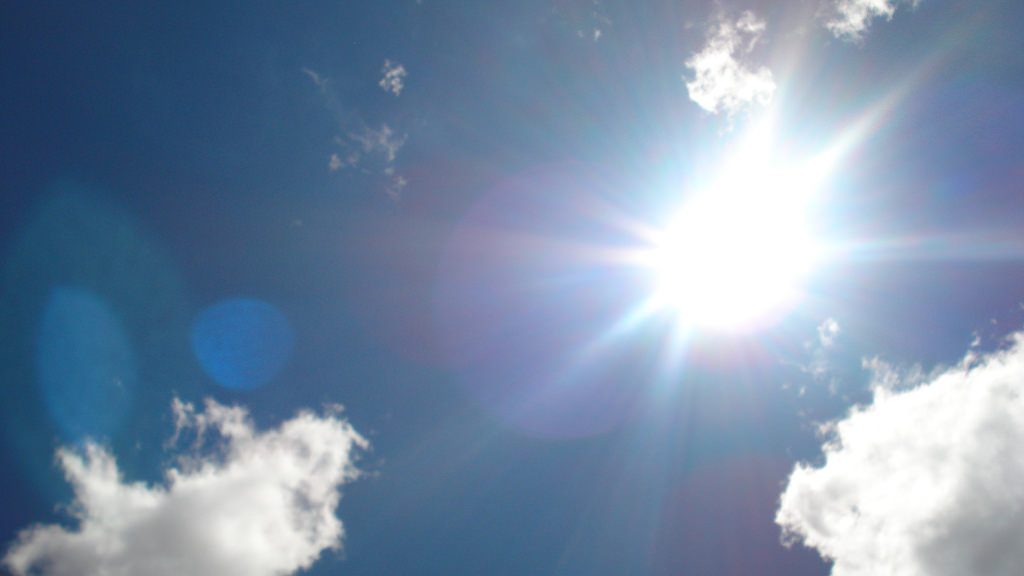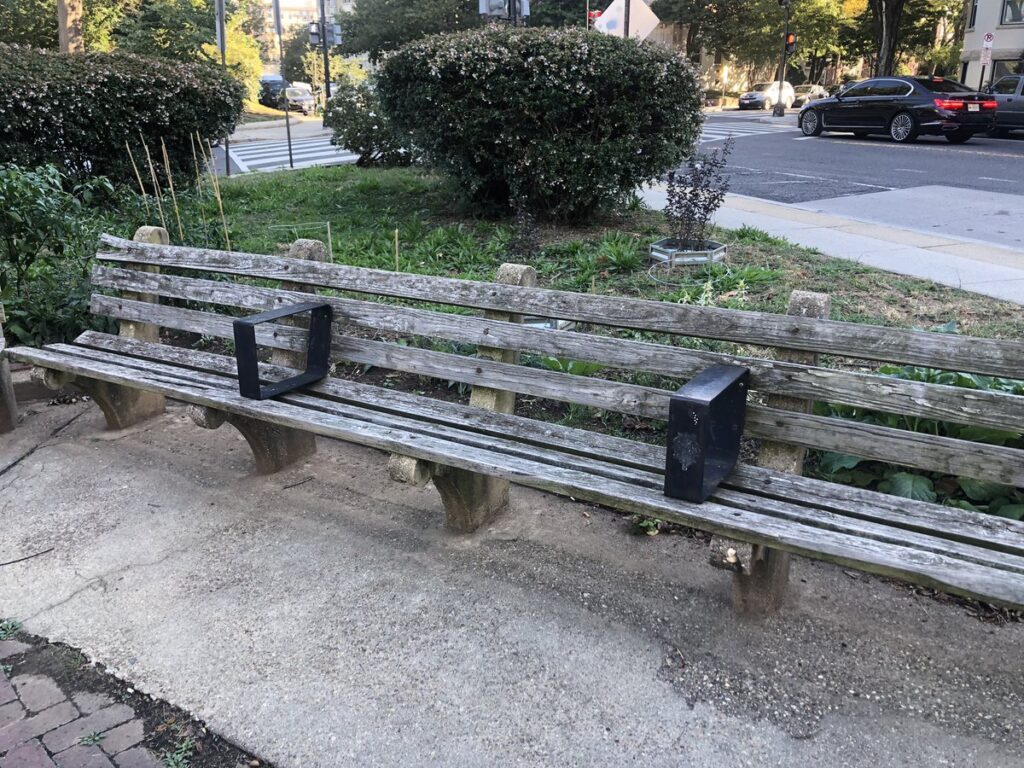On June 18 temperatures soared above 90 degrees, the heat index was above 100 degrees and the D.C. government issued the first heat alert of the year. More than 15 buildings were opened to the public and a shuttle van service was available to transport people to these and other “cooling centers.”
[Resource: Find a cooling center with the city’s interactive map]
Temperatures exceeded 90 degrees for four more days in June. And on July 3 the national weather service issued an extreme heat warning from D.C. to Baltimore. That day, at a quarterly meeting where homeless residents and officials from the D.C. Interagency Council on Homelessness expected to begin planning for the city’s next “Winter Plan,” the topic of how to deal with and better plan for the heat ended up dominating the conversation.
All of the homeless attendees agreed more work was needed to raise awareness of city resources for keeping cool. The Wilson Building, where the meeting was held, is an official cooling center where anyone can come in and take advantage of the air conditioning, water fountains, and other facilities. This was news to at least one person at the meeting. While the ICH writes the city’s annual plan to shelter everyone who may experience homelessness during the winter, the District’s Homeland Security and Emergency Management Agency coordinates the “Heat Emergency Plan” for the summer, which more broadly provides for all District residents.

The mantra of the meeting ended up being “more coordination is needed” between homeless services and HSEMA. Homeless attendees identified potential breaks in communication such as a person staying at a shelter who might not learn the shelter will remain open all day due to a heat alert before they leave the shelter thinking they need to find somewhere else to keep cool.

Officials in attendance were eager to help and on July 16, the city’s text-messaging alert system for the homeless community began transmitting hyperthermia alert notices, directing recipients to call the shelter hotline for transportation to a cooling center.
[Read more: Text-messaging system a potential guide to homeless services]
When Street Sense went to press on July 10, temperatures had already gone above 90 degrees on five July days and heat alerts have been activated. Very hot temperatures are predicted for the rest of the month.
During the first alert in June, Street Sense Media contacted representatives of more than 30 buildings listed as cooling centers in the city’s heat emergency plan. Most said no more people than usual had stopped by to get out of the weather. Several D.C. residents seeking shelter and meals said they did not utilize the District’s designated cooling centers but found other buildings more convenient to escape the sun’s rays.
The Adam’s Place Day Center, which normally operates Monday through Friday, was opened on a weekend because of the heat alerts. Some representatives of cooling center said they did not know their locations had been designated as official cooling centers, but they said people were welcome to come in to get out of the weather. Facilities like libraries, pools and government office buildings were already open for regular hours. Other buildings, such as city-run shelters, opened early to accommodate people trying to cool off.
“We get people in here every day [to get out of the elements]. Today is no different,” one cooling center representative said.
One library staff member said this was the case at their location as well, usually, but warned that the staff had been dealing with a broken air conditioner all day.
The Patricia Handy Place for Women, located in Chinatown, opened early to offer a cooling space in the common area. By the afternoon, the shelter had hosted roughly 50 people, according to Low-Barrier Program Manager Michelle Durhan.
Red hot planet: All-time heat records have been set all over the world during the past week: https://t.co/AhI3wnNPoh
— Capital Weather Gang (@capitalweather) July 3, 2018
[Read more: During the 2016 #DCHomelessCrisis news blitz, ThinkProgress reported on climate change’s growing impact on people experiencing homelessness as extreme weather becomes more frequent]
Four representatives at cooling centers said they were not open for that purpose when Street Sense Media called on June 19, while representatives at four other buildings listed as cooling centers did not immediately return requests for comment.
Dwight, a D.C. resident who did not wish to give his last name, said in an interview outside Miriam’s Kitchen that he tends to stay away from shelters because they become crowded.
He said the shelters he visited during winter hypothermia alerts had a lot of people and were uncomfortable. He expected similar conditions in the cooling centers.
“They’ve got 50 bunk beds and big rooms. No security,” he said. “I wouldn’t go near that place.”
Dwight said it is easier to stay cool in places like the park behind the White House and at Union Station, which he said he reached using the Circulator bus.
He knew about the shuttle buses that take people to a cooling center for free but said he felt like he had other options.
[Resource: Call the shelter hotline to receive transportation during heat alerts and hypothermia alerts 202-399-7093]
Two other people waiting in the line for meals at Miriam’s Kitchen said they were able to go to a Starbucks and to the Cloyd Heck Marvin Student Center at George Washington University, a building that is open to the public during the day.
One man who requested anonymity said people living on the streets would be safer if they were educated about staying hydrated and safe. Most people don’t know how dangerous it is to be in the sun all day, he said.
Dr. Catherine Crosland of Unity Health Care said the most important steps on a hot day are to drink water, eat salty food and stay inside as much as possible.
Extreme heat can exacerbate existing medical conditions. Heat stroke and heat exhaustion are two big medical concerns for people experiencing homelessness, especially for those who have nowhere to store their belongings and must wear layers or carry heavy bags with them. People who have heart disease or diabetes are more at risk from complications, according to Crosland.
Pedestrians can take measures to help.
“For passersby that are concerned about folks, offering water or Gatorade can certainly be invaluable,” Crosland said. “So can encouraging folks to get in the shade or get inside.”

Olivia Zhang, Colleen Cosgriff and Eric Falquero contributed to this report.
Update (07.16.2018)
This article was first published during the extreme heat warning on July 3. It has been updated with details from the Interagency Council on Homelessness meeting that occurred that day, subsequent heat alerts before the article was release in print July 11, and the fact that the city began issuing heat-alerts through it’s “Hope Once Source” system for the homeless community, as a result of discussion at the ICH pre-meeting.








